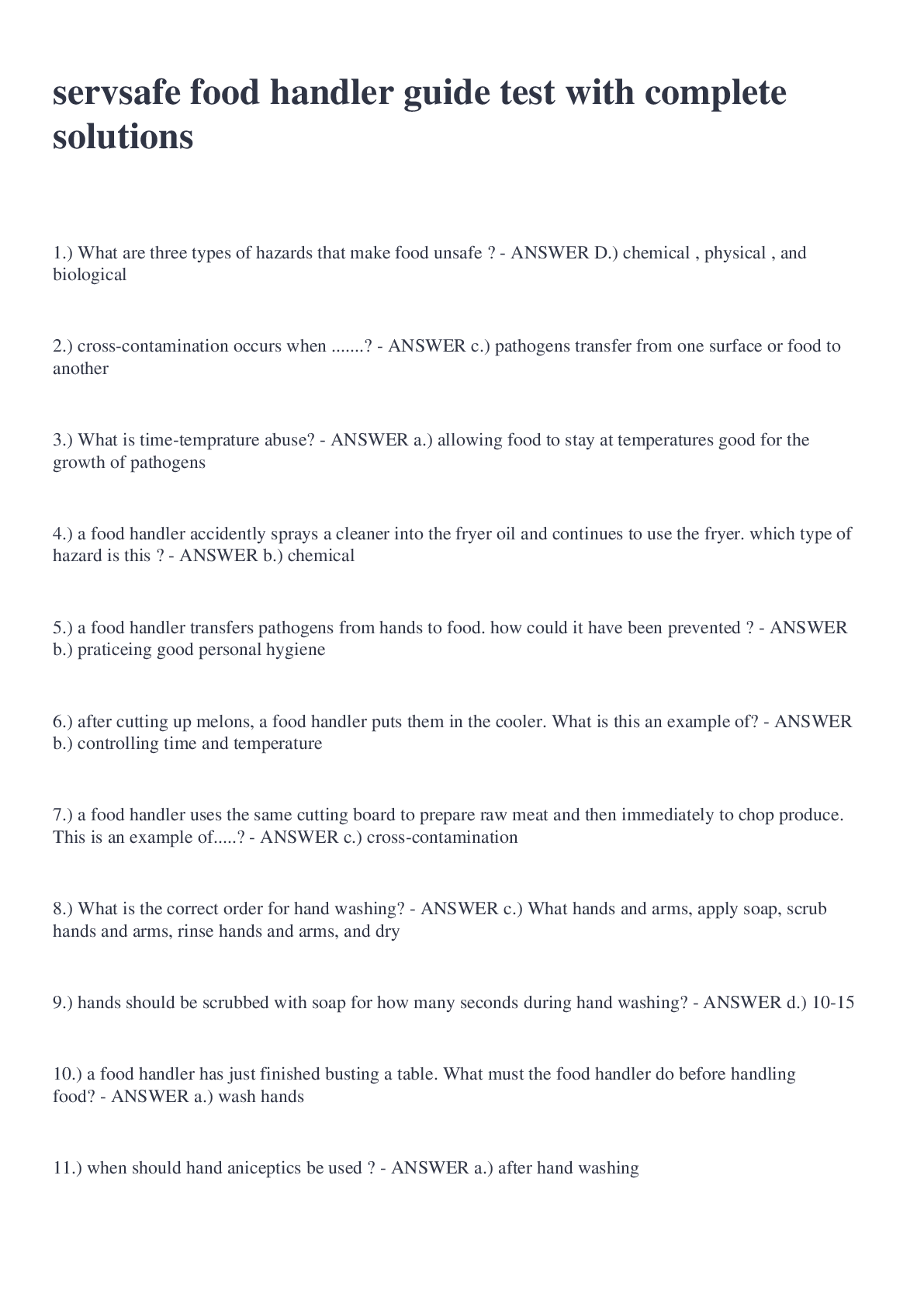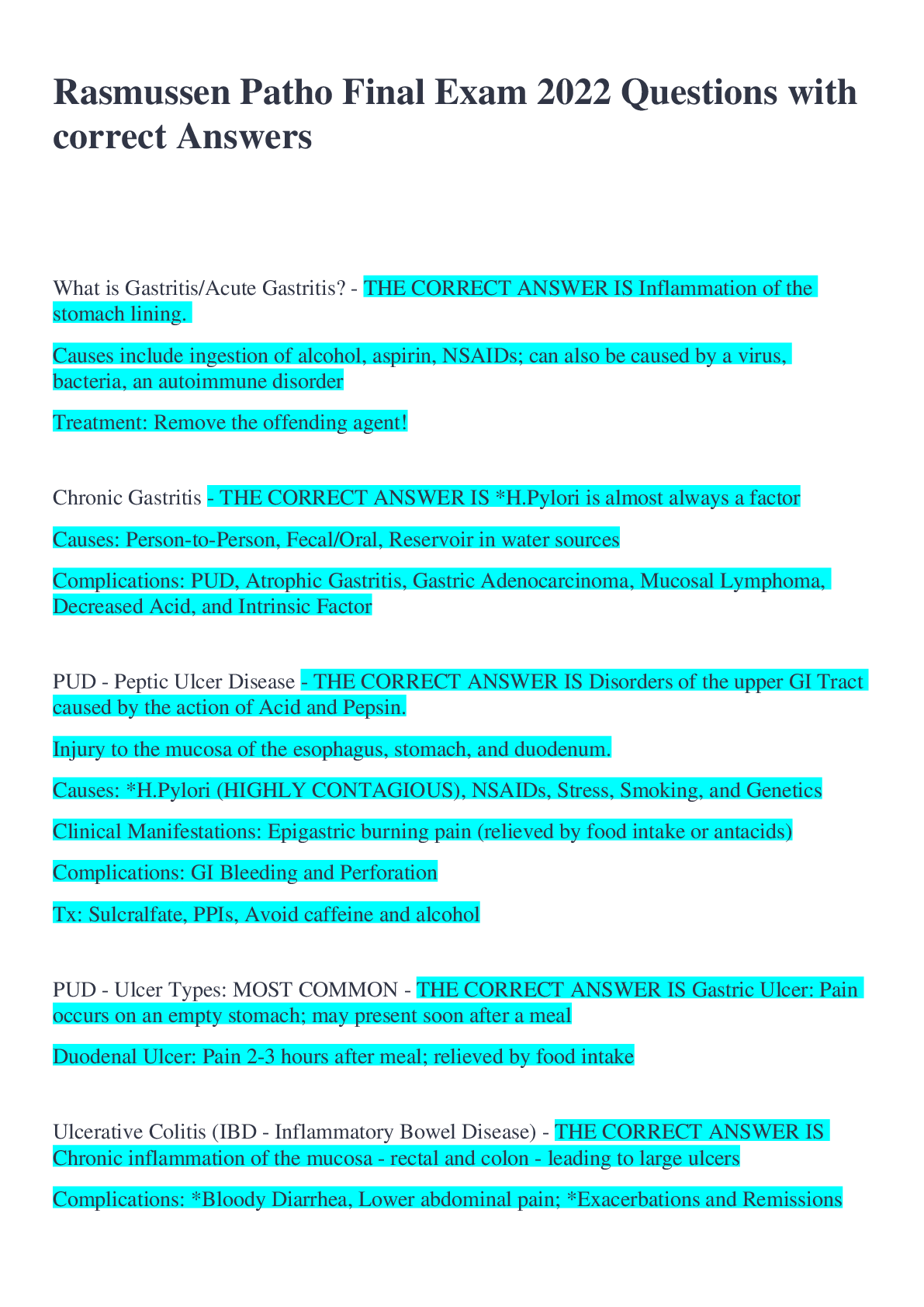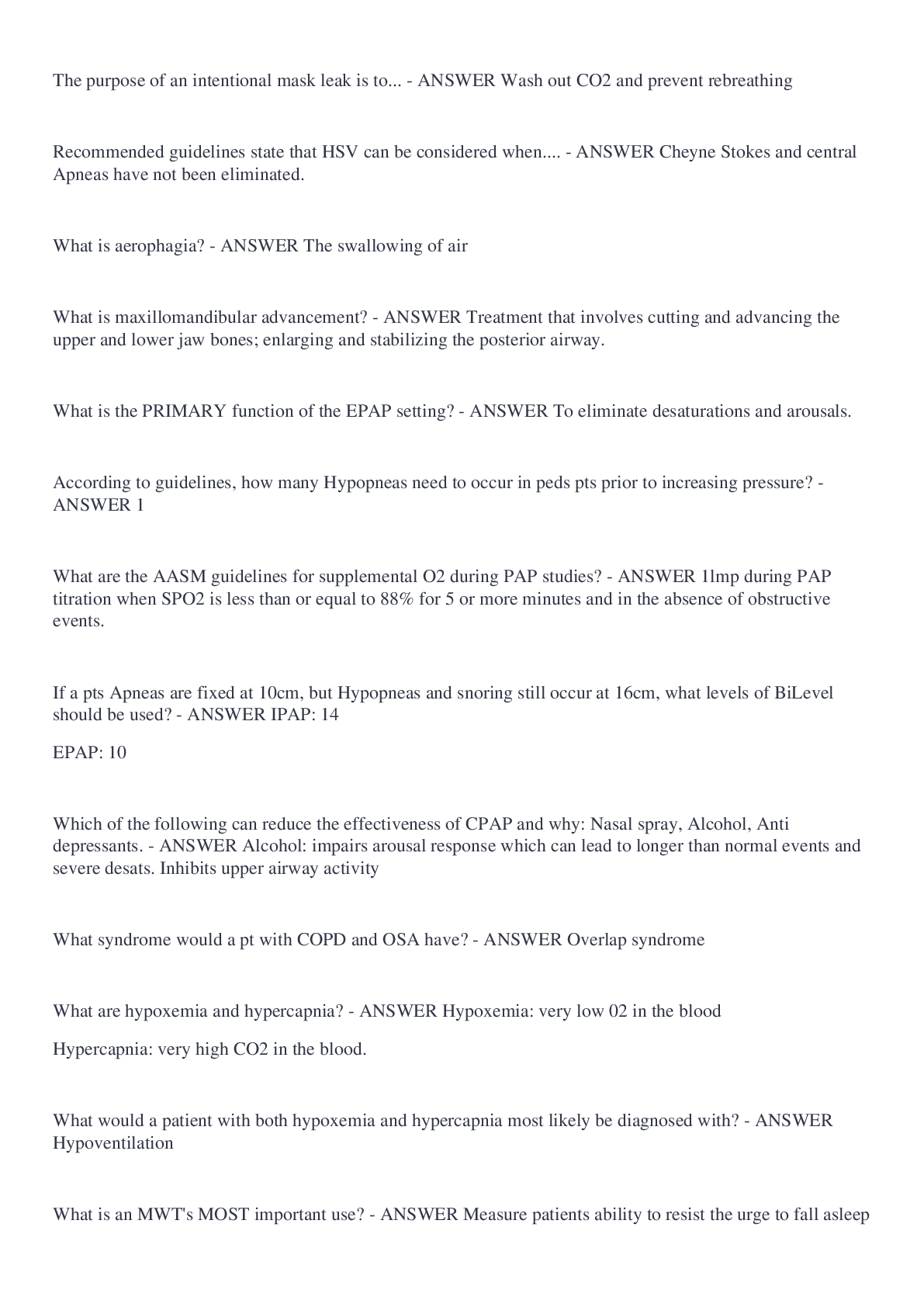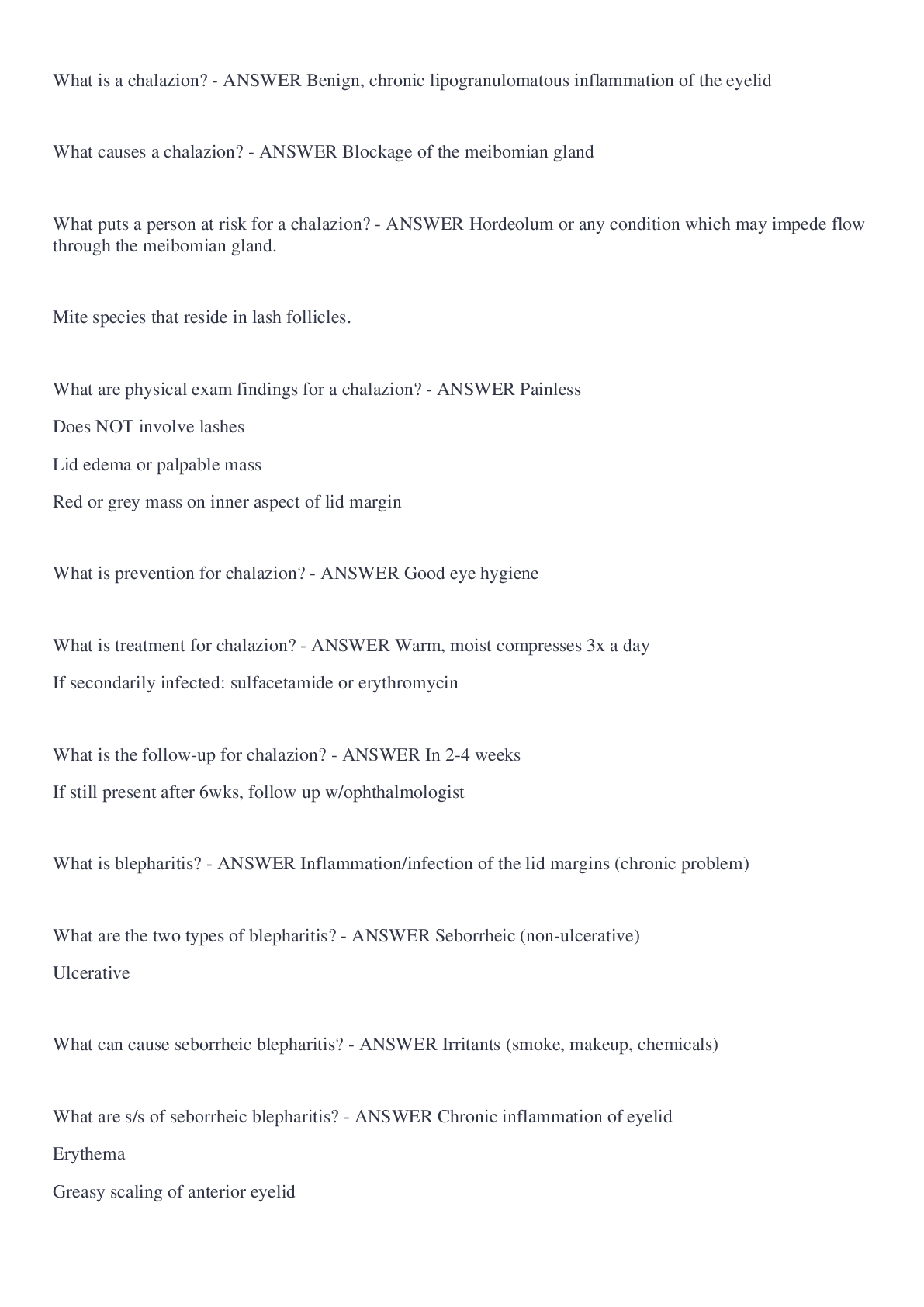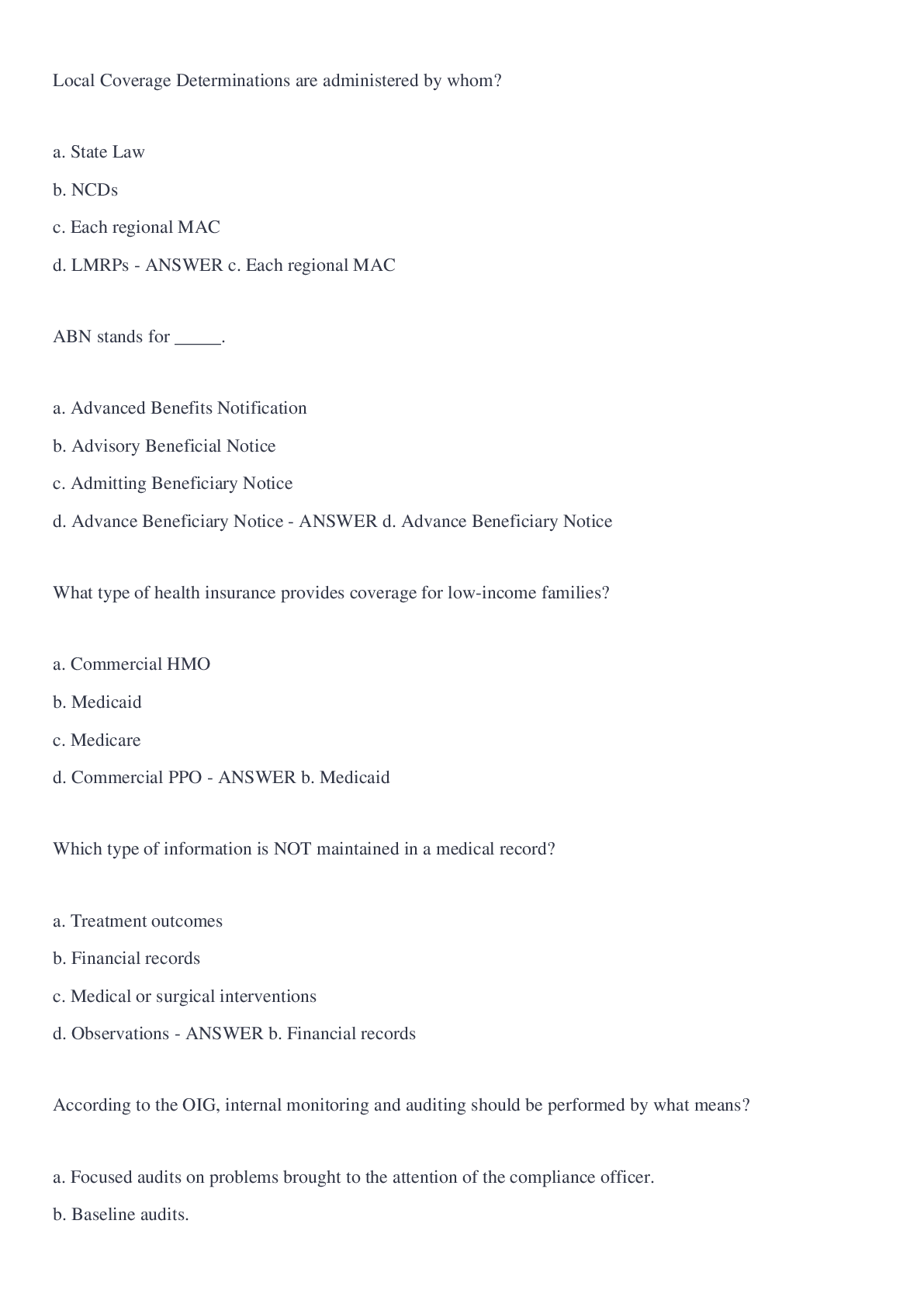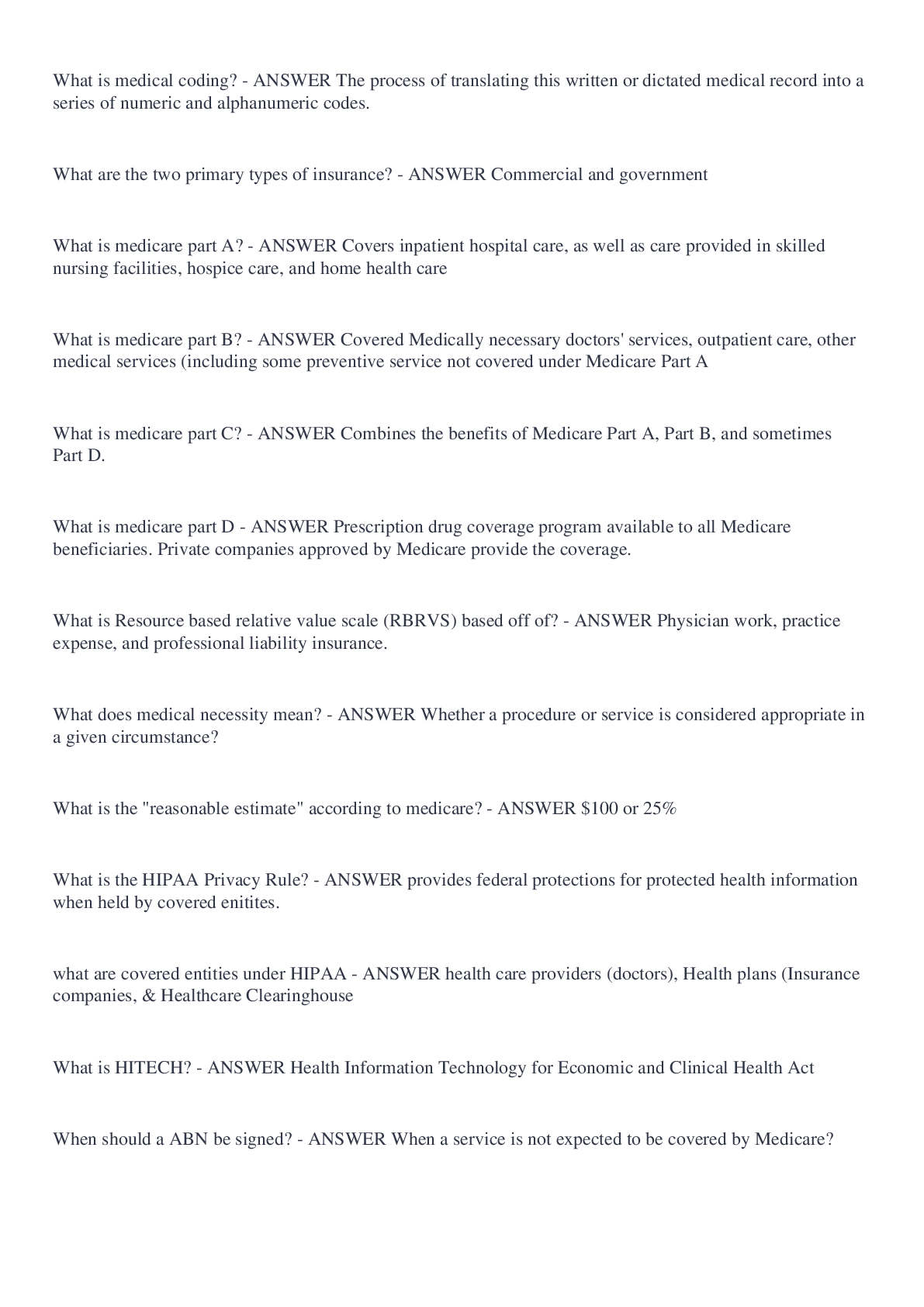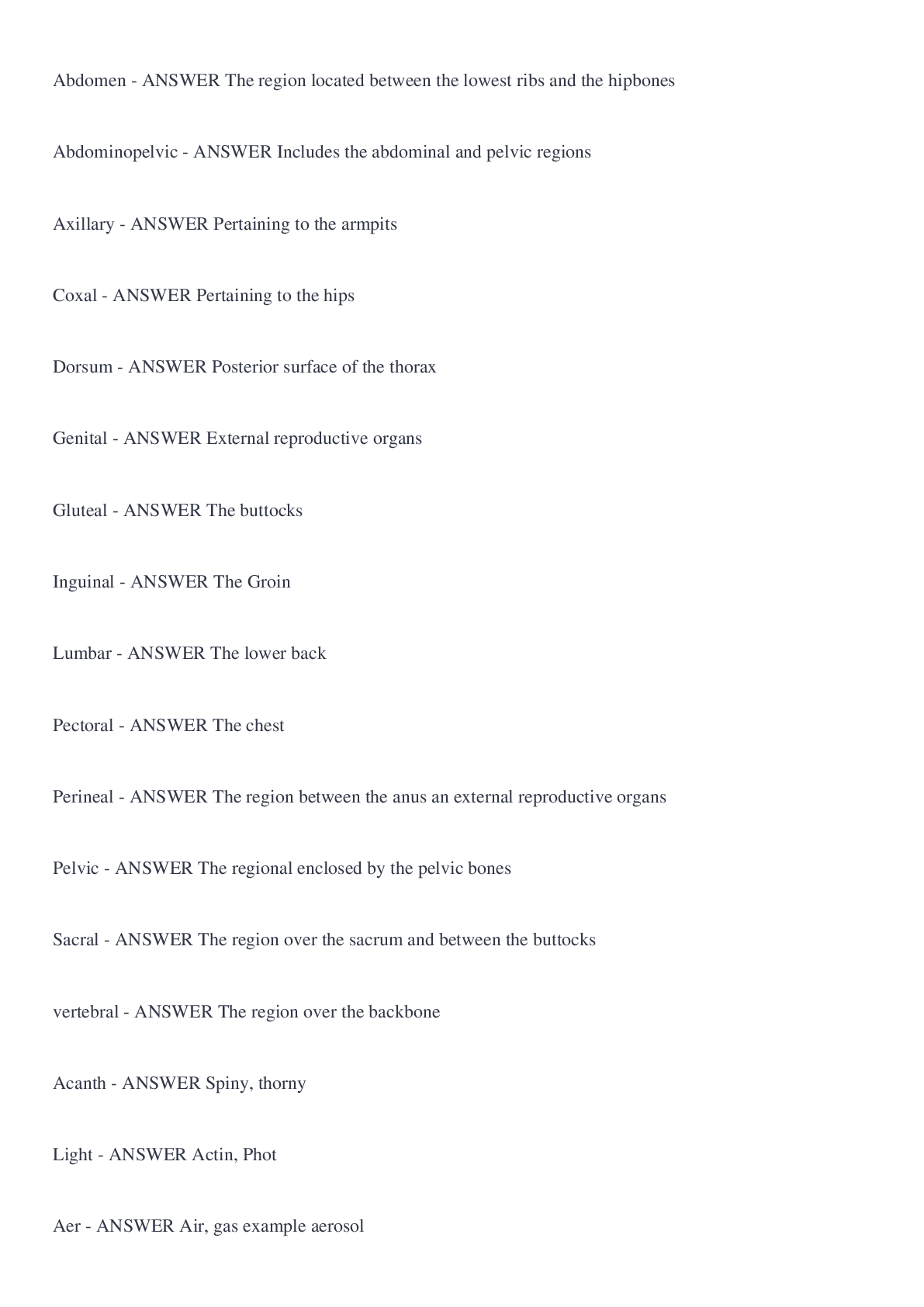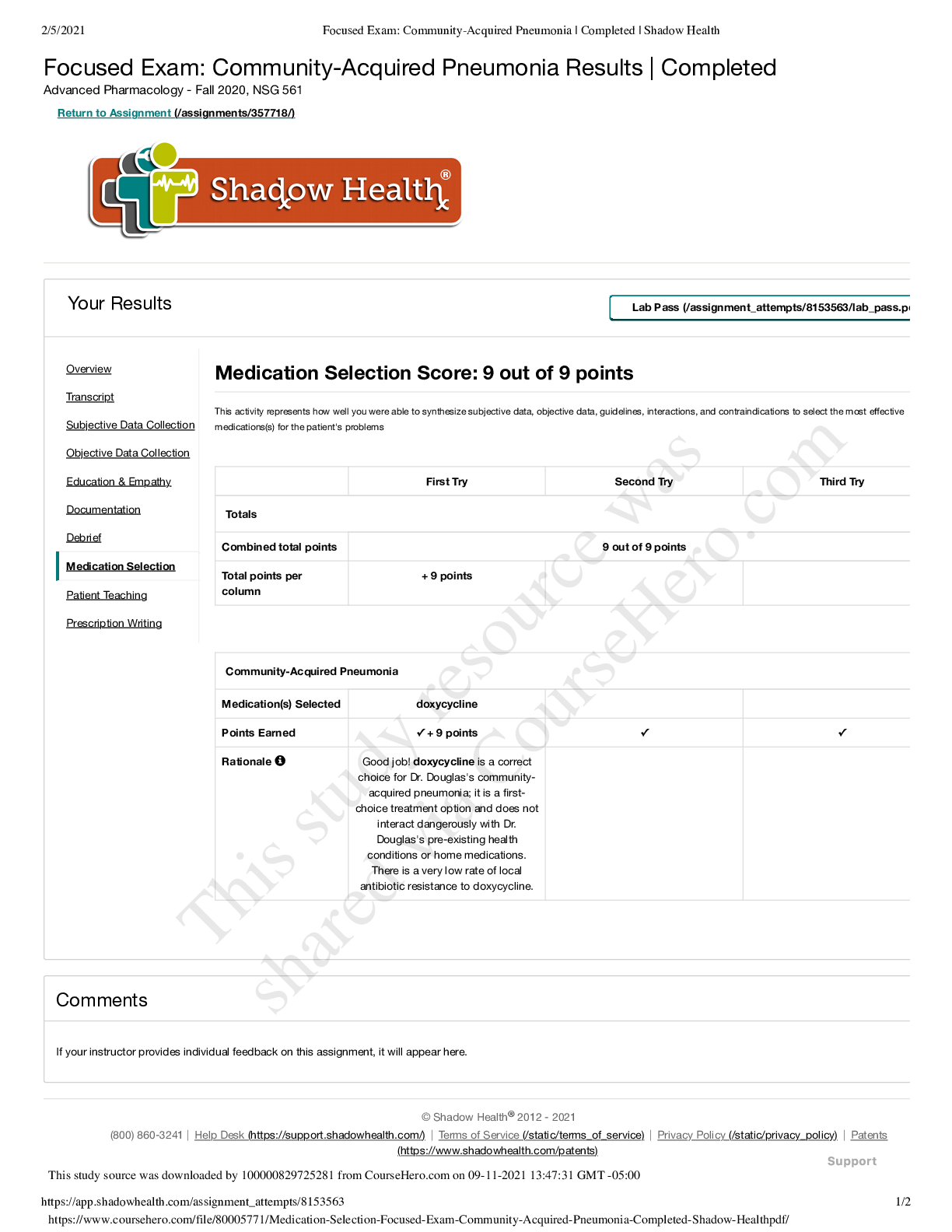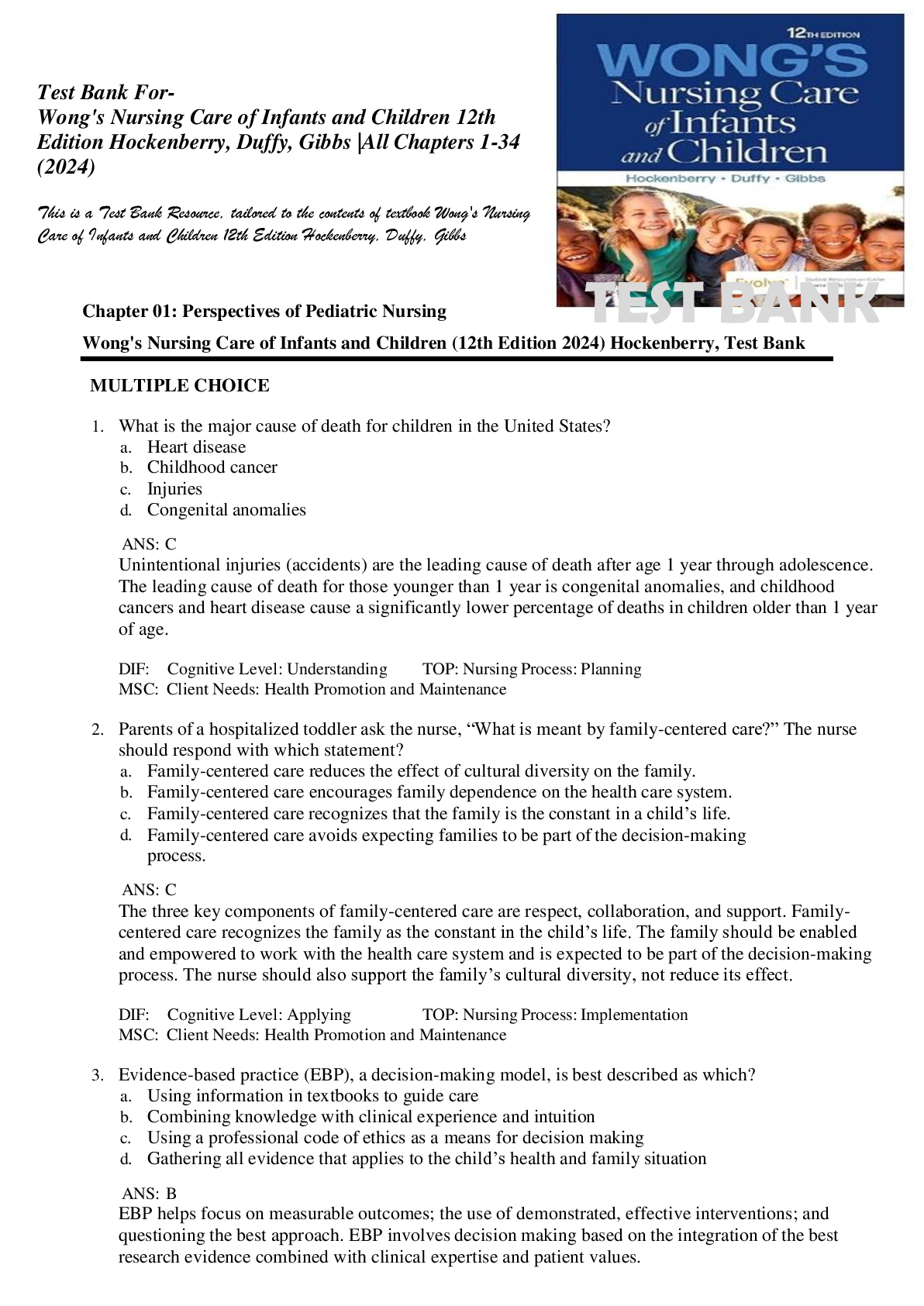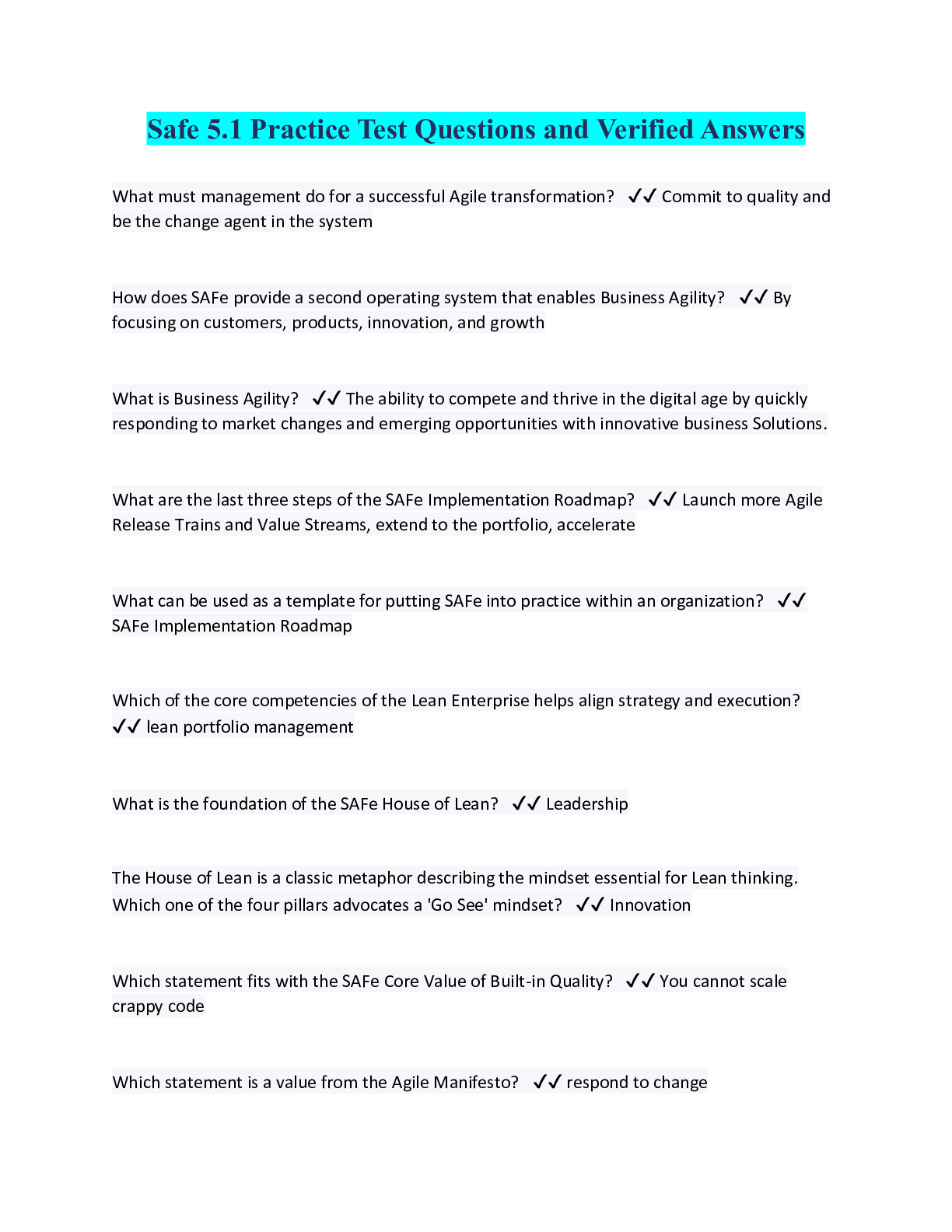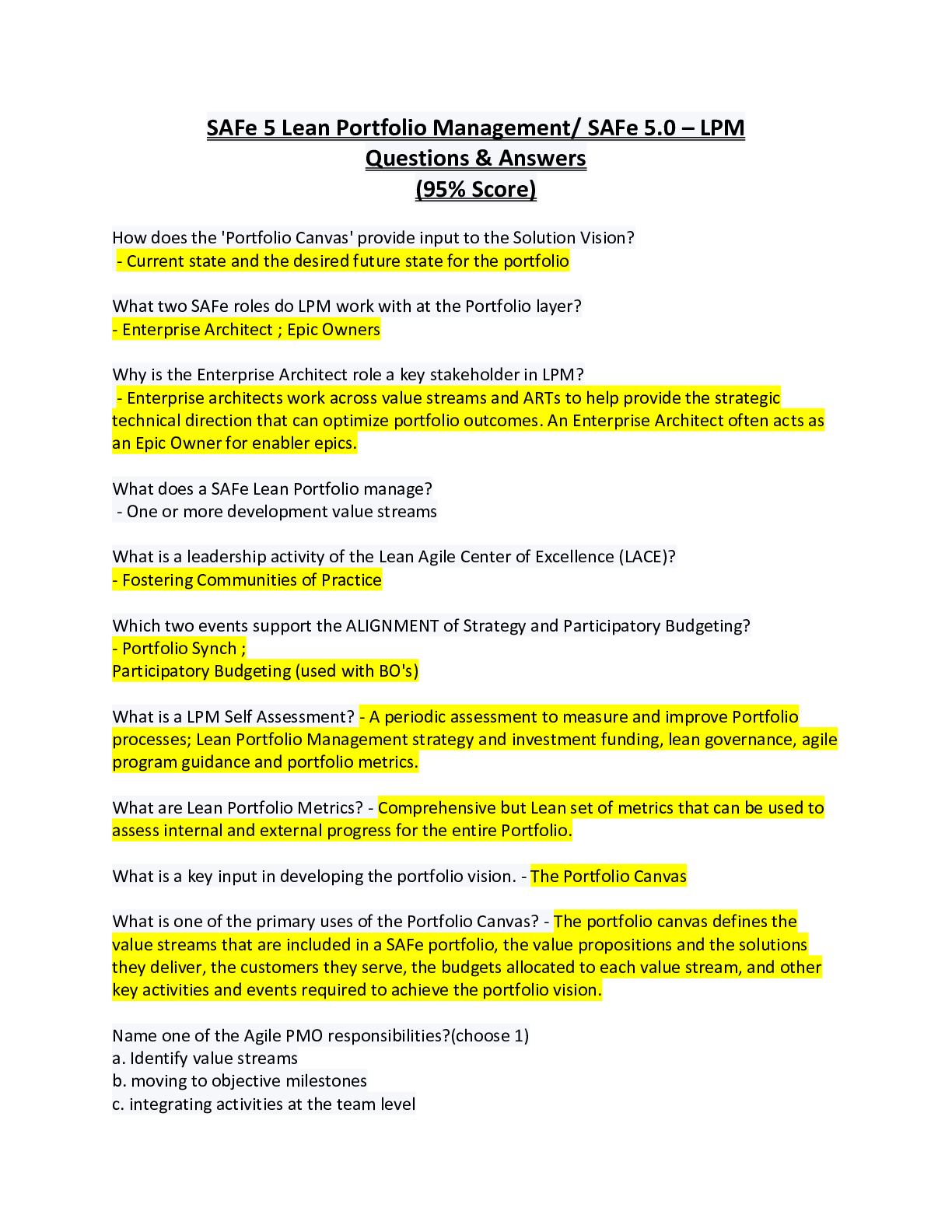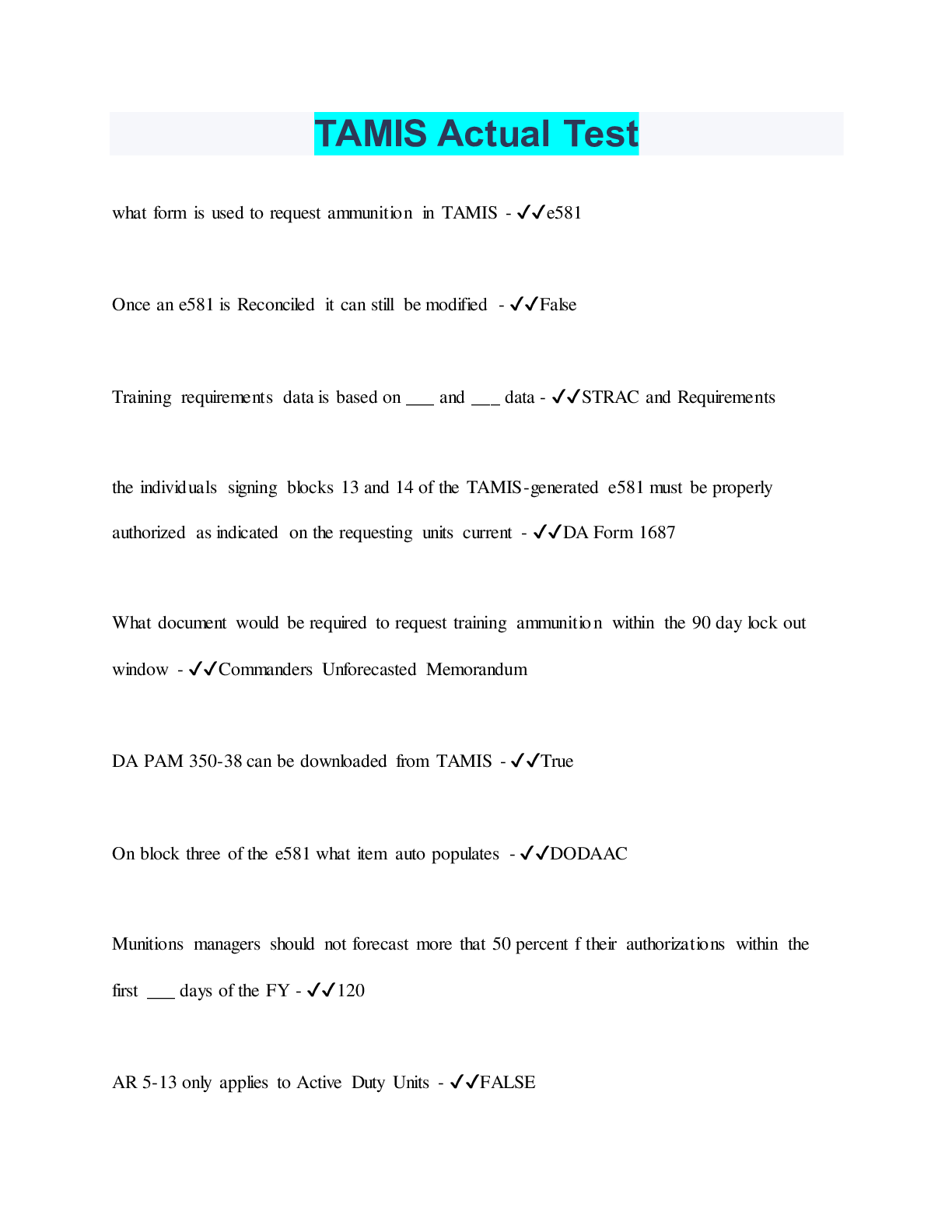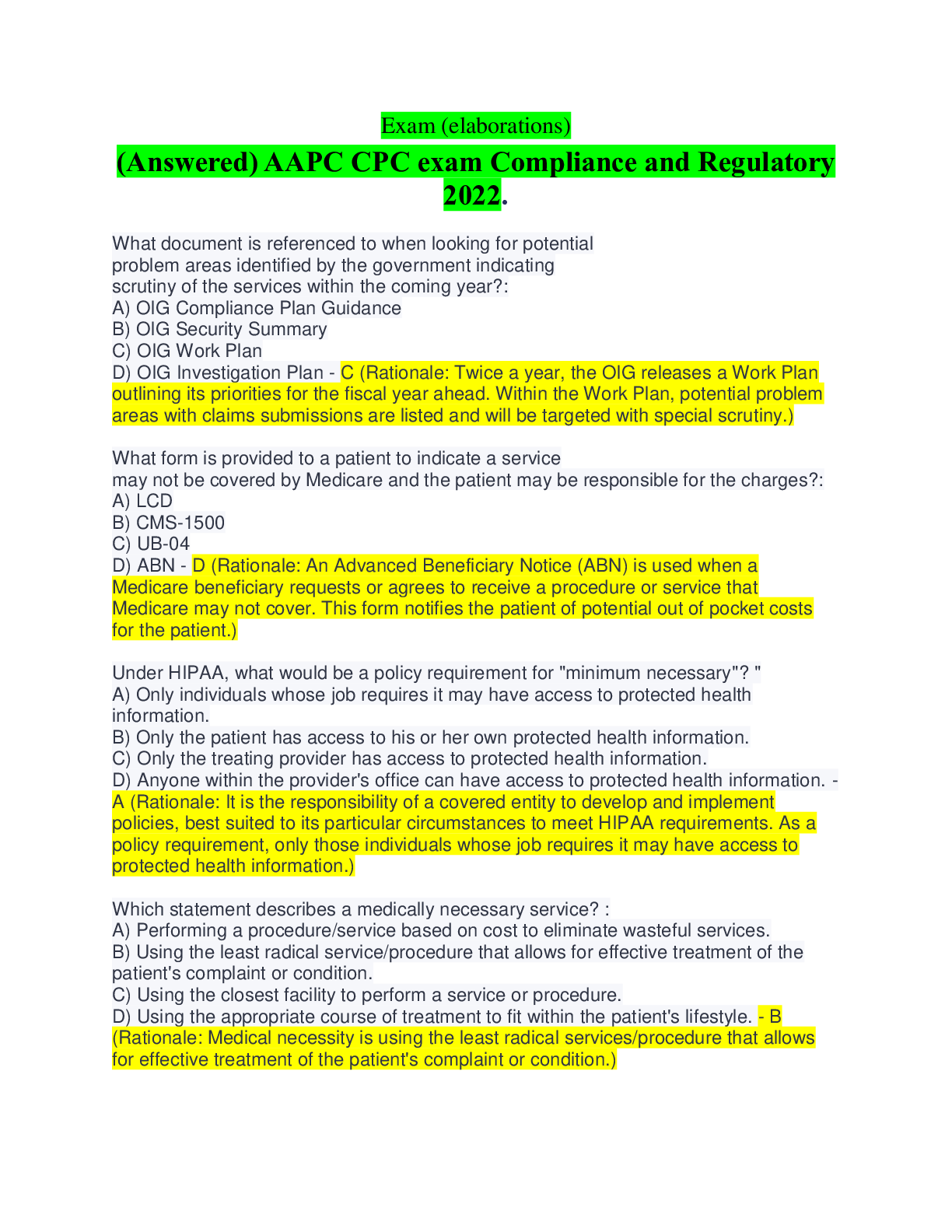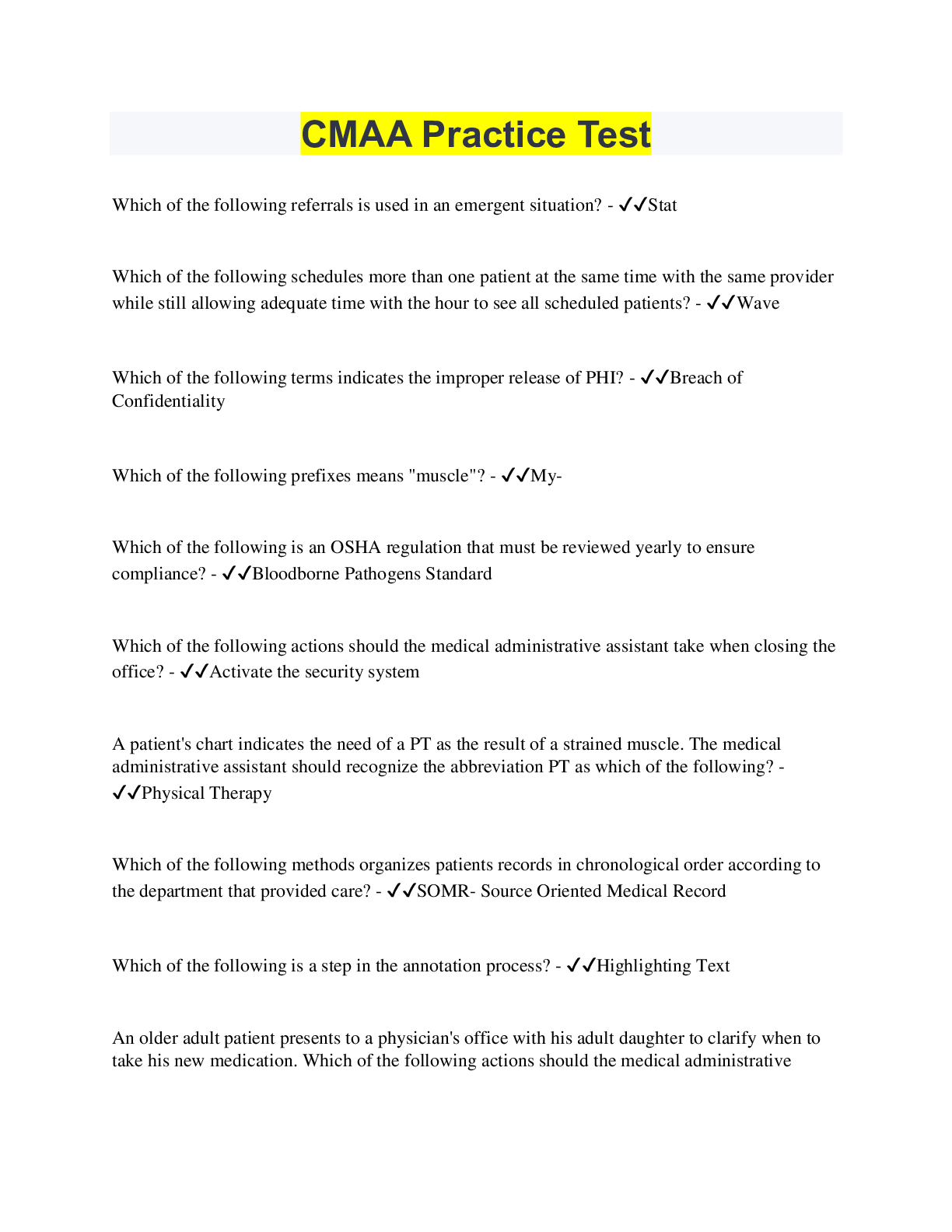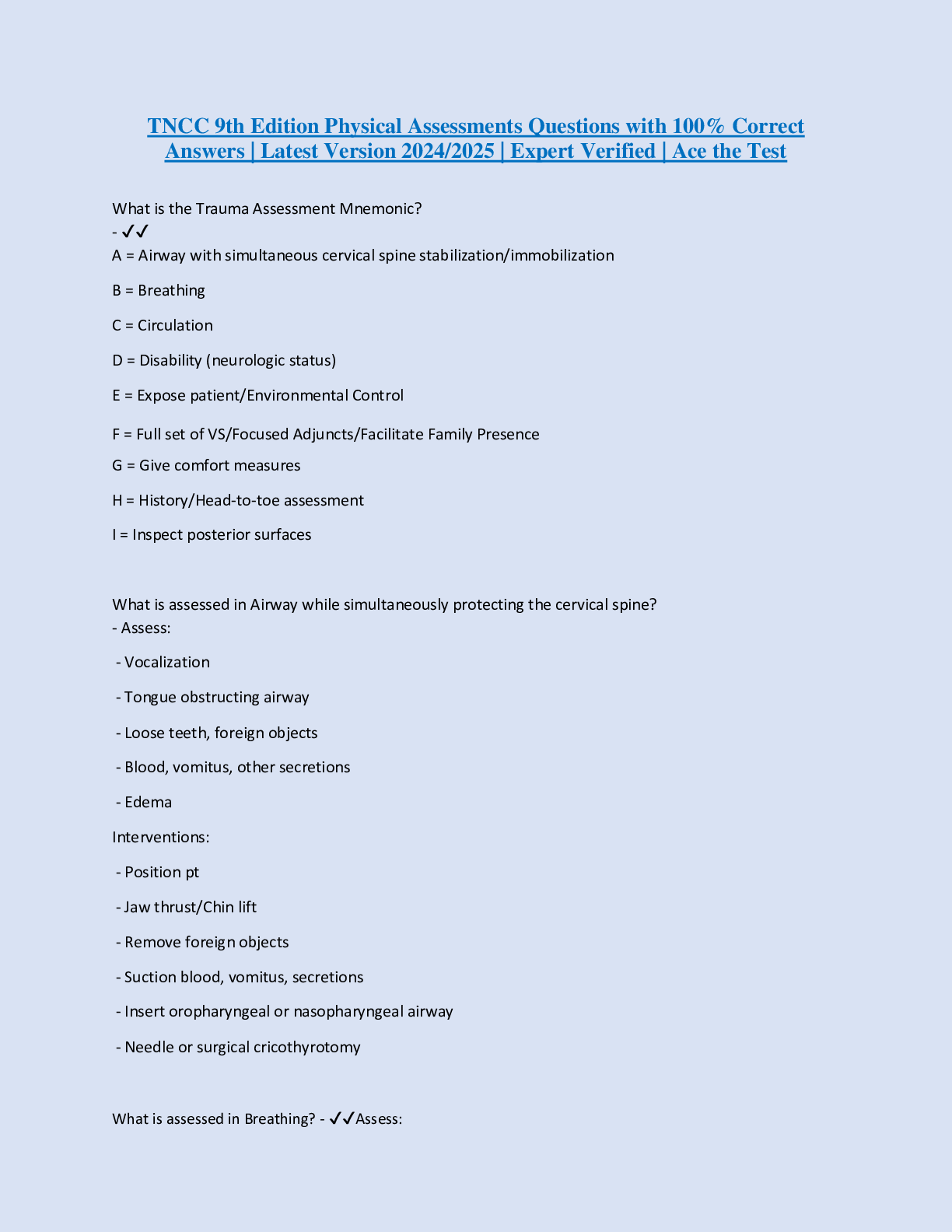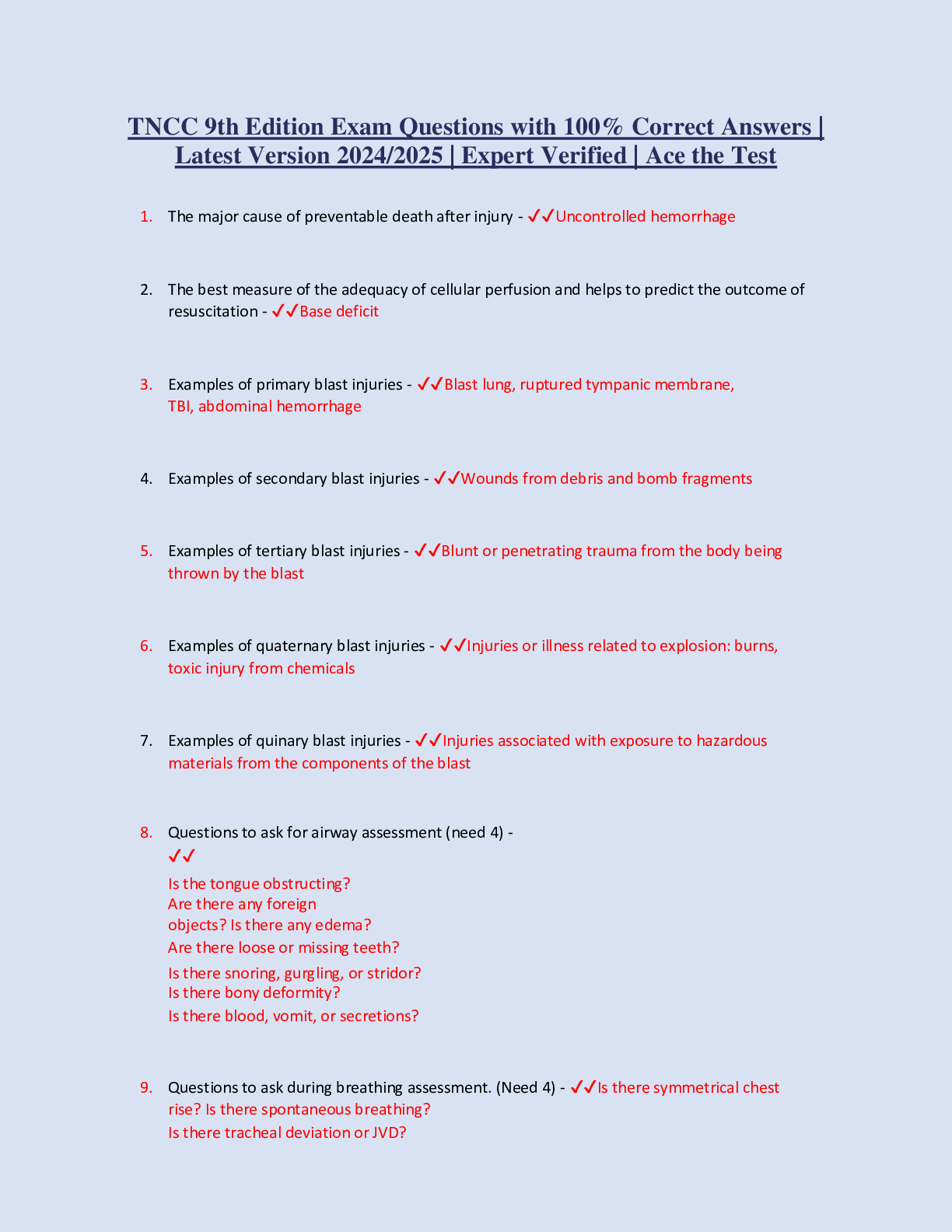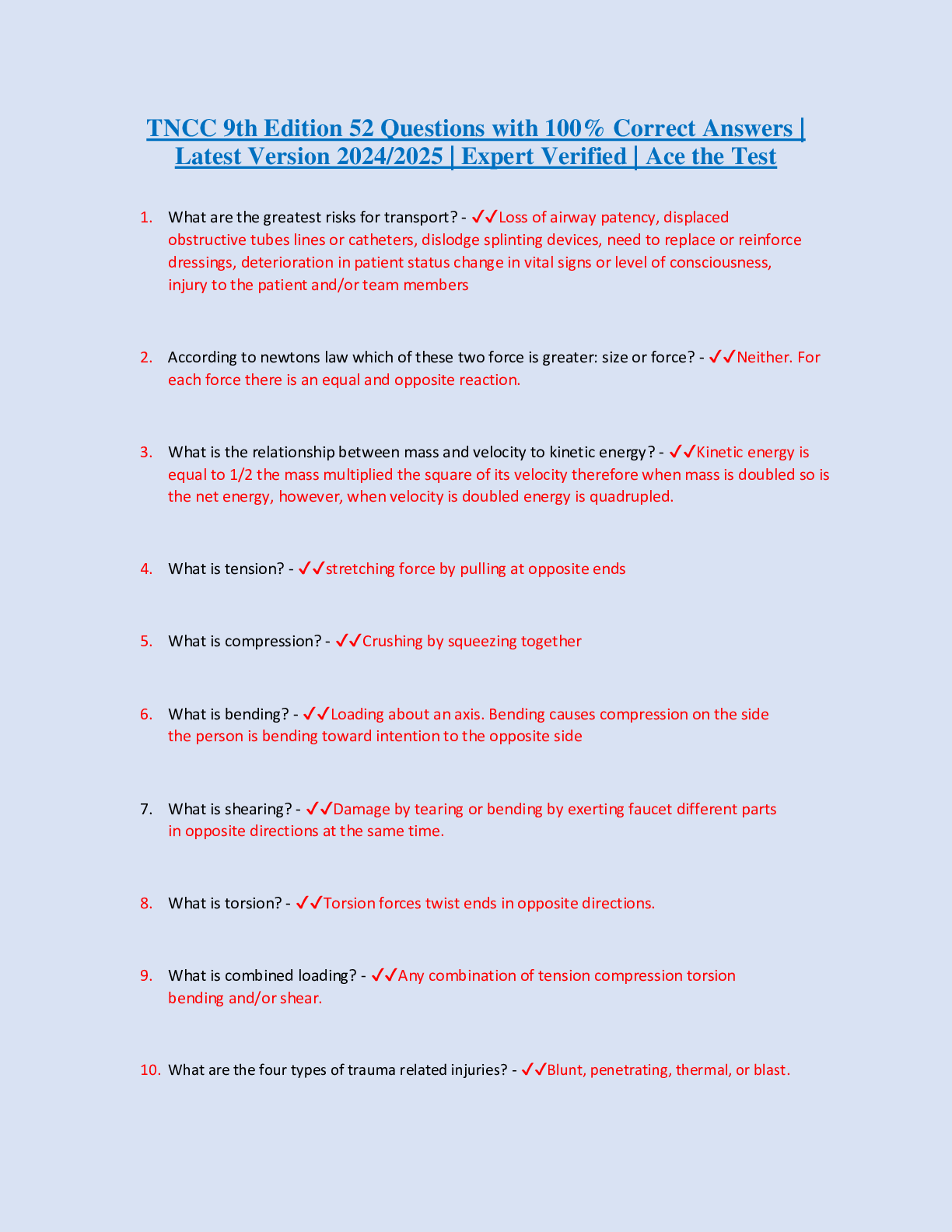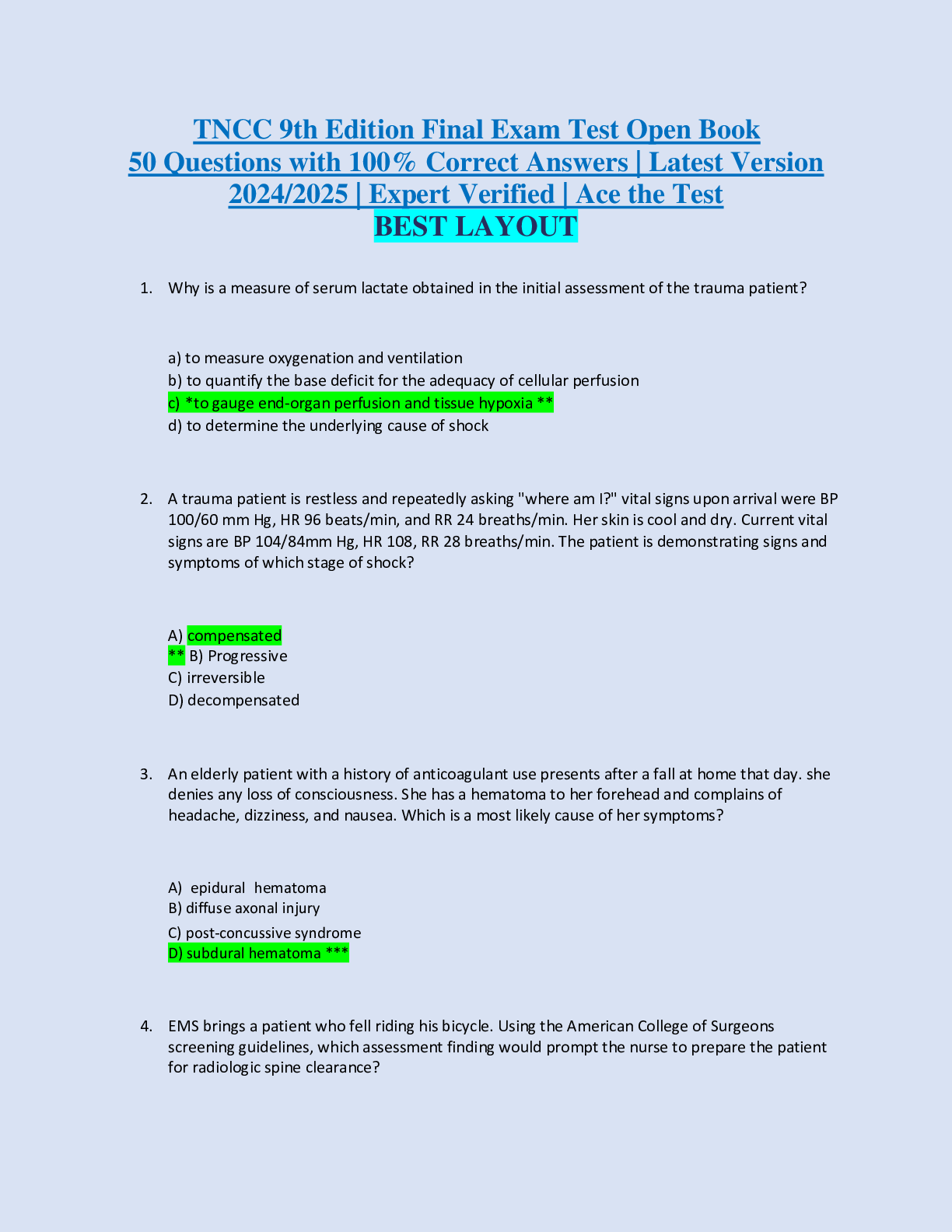Computer Science > EXAM > ACLS Final Exam Complete (Fall2021|2022 solved 100%) (All)
ACLS Final Exam Complete (Fall2021|2022 solved 100%)
Document Content and Description Below
BEST PLAYLIST I'VE FOUND FOR ALL HEART.ORG ACLS CODES! - ANSWER https://www.youtube.com/watch?v=qQTpqjvvduI&list=PLy60DSDPg9urf_l5ss1FLakrRQDKOkTZj This is a good starting point for Jose (big Mega ... code at end): https://www.youtube.com/watch?v=8OB7OreUjy0. Use the feedback after failing to get closer and closer to passing! In which situation does bradycardia require treatment? - ANSWER Hypotension Which intervention is most appropriate for the treatment of a patient in asystole? - ANSWER Epinephrine You arrive on the scene with the code team. High-quality CPR is in progress. An AED has previously advised "no shock indicated." A rhythm check now finds asystole. After resuming high-quality compressions, which action do you take next? - ANSWER Establish IV or IO access A monitored patient in the ICU developed a sudden onset of narrow-complex tachycardia at a rate of 220/min. The patient's blood pressure is 128/58 mm Hg, the PETCO2 is 38mm Hg, and the pulse oximetry reading is 98%. There is vascular access in the left arm, and the patient has not been given any vasoactive drugs. A 12-lead ECG confirm a supraventricular tachycardia with no evidence of ischemia or infarction. The heart rate has not responded to vagal maneuvers. what is your next action? - ANSWER Administer adenosine 6mg IV push A patient has sinus bradycardia with a heart rate of 36/min. Atropine has been administered to a toal does of 3 mg. A transcutaneous pacemaker has failed to capture. The patient is confused, and her blood pressure is 88/56 mm Hg. Which therapy is now indicated? - ANSWER Epinephrine 2 to 10 mcg/min A patient is in cardiac arrest. Ventricular fibrillation has been refractory to a second shock. Which drug should be administered first? - ANSWER Epinephrine 1 mg IV/IO A 62-year-old man suddenly experienced difficulty speaking and left-sided weakness. He meets initial criteria for fibrinolytic therapy, and a CT scan of the brain si ordered. Which best describes the guidelines for antiplatelet and fibrinolytic therapy? - ANSWER Hold aspirin for at least 24 hours if rtPA is administered A patient is in refractory ventricular fibrillation and has received multiple appropriate defribillation shocks, epinephrine 1 mg IV twice, and an initial dose of amiodarone 300mg IV. The patient is intubated. Which best describe the recommended second does of amiodarone for this patient? - ANSWER 150 mg IV push A patient with sinus bradycardia and a heart rate of 42/min has diaphoresis and a blood pressure of 80/60mm Hg. What is the initial does of atropine? - ANSWER 0.5mg A 35-year-old woman has palpitations, light-headedness, and a stable tachycardia. The monitor shows a regular narrow-complex QRS at a rate of 180/min. Vagal maneuvers have not been effective in terminating the rhythm. An IV has been established. Which drug should be administered? - ANSWER Adenosine 6mg A patient is in cardiac arrest. Ventricular fibrillation has been refractory to an initial shock. If no pathway for medication administration is in place, which method is preferred? - ANSWER IV or IO What is the indication for the use of magnesium in cardiac arrest? - ANSWER Pulseless ventricular tachycardia-associated torsades de pointes A patient has a rapid irregular wide-complex tachycardia. The ventricular rate is 138/min. He is asymptomatic, with a blood pressure of 110/70 mm Hg. He has a history of angina. What action is recommended next? - ANSWER Seeking expert consultation A patient is in cardiac arrest. High-quality chest compressions are being given. The patient is intubated, and an IV has been started. The rhythm is asystole. What is the first drug/dose to administer? - ANSWER Epinephrine 1mg IV/IO A patient is in refractory ventricular fibrillation. High-quality CPR is in progress. One does of epinephrine was given after the second shock. An antiarrhythmic drug was given immediately after the third shock. You are the team leader. Which medication do you order next. - ANSWER Epinephrine 1 mg A patient with possible STEMI has ongoing chest discomfort. What is a contraindication to nitrate administration? - ANSWER Use of a phosphodiestrase inhibitor within the previous 24 hours A 57-year-old woman has palpitation, chest discomfort, and tachycardia. The monitor shows a regular wide-QRS at a rate of 180/min. She becomes diaphoretic, and her blood pressure is 80/60 mm HG/ Which action do you take next? - ANSWER Perform electrical cordioversion A patient with STEMI has ongoing chest discomfort. Heparin 4000 units IV bolus and a heparin infusion of 1000 units per hour are being administered. The patient did not take aspirin because he has a history of gastritis, with was treated 5 years ago. What is your next action? - ANSWER Give aspirin 160-325 mg to chew You are caring for a 66-year-old man with a history of a large intracerebral hemorrhage 2 months ago. He is being evaluated for another acute stroke. The CT scan is negative for hemorrhage. The patient is receiving oxygen via nasal cannula at 2L/min, and an IV has been established. His blood pressure is 180/100mm Hg. Which drug do you anticipate giving to this patient? - ANSWER Aspirin A patient is in pulseless ventricular tachycardia. Two shocks and 1 dose of epinephrine have been given. Which drug should be given next? - ANSWER Amiodarone 300mg What is the maximum interval for pausing chest compressions? - ANSWER 10 seconds Your patient is a 56-year-old woman with a history of type 2 diabetes who reports feeling dizzy. She is pale and diaphoretic. Her blood pressure is 80/66mm Hg. The cardiac monitor documents the rhythm shown here. She is receiving oxygen at 4L/min by nasal cannula, and an Iv has been established. What do you administer next? - ANSWER Atropine 0.5mg IV A 35-year-old woman presents with a chief complaint of palpitations. She has no chest discomfort, shortness of breath, or light-headedness. Her blood pressure is 120/78mm Hg. Which intervention is indicated first? - ANSWER Vagal maneuvers Which action should you take immediately after providing an AED shock? - ANSWER Resume chest compressions What action minimizes the risk of air entering the victim's stomach during-bag mask ventilation? - ANSWER Ventilating until you see the chest rise You are providing bag-mask ventilations to a patient in respiratory arrest. How often should you provide ventilation? - ANSWER About every 5-6 seconds After initiation of CPR and 1 shock for ventricular fibrillation, this rhythm is present on the next rhythm check. A second shock is given, and chest compressions are resumed immediately. An IV is in place, and no drugs have been given. Bag-mask ventilations are producing visible chest rise. What is your next intervention? - ANSWER Give epinephrine 1mg IV/IO A patient's 12-lead ECG is transmitted by the paramedics and shows a STEMI. When the patient arrives in the emergency department, the rhythm shown here is seen on the cardiac monitor. The patient has resolution of moderate (5/10) chest pain after 3 doses of sublingual nitroglycerin. Blood pressure is 104/70mm Hg. Which intervention is most important in reducing this patient's in-hospital and 30-day mortality rate? - ANSWER Repersfusion therapy A patient was in refractory ventricular fibrillation. A thrid shock has just been administered. Your team looks to you for instructions. What is your next action? - ANSWER Resume high quality chest compressions Which action is likely to cause air to enter the victim's stomach (gastric inflation) during bag-mask ventilation? - ANSWER Ventilating too quickly A 45-year-old woman with a history of palpitations develops light-headedness and palpitations. She has received adensoine 6mg IV for the rhythm shown here (SVT), without conversion of the rhythm. She is now extremely apprehensive. Her blood pressure si 128/70mm Hg. What is the next appropriate intervention? - ANSWER Administer adenosine 12 mg IV Your patient is not responsive and is not breathing, You can palpate a carotid pulse. Which action do you take next? - ANSWER Start rescue breathing You arrive on the scene to find CPR in progress. Nursing staff report the patient was recovering from a pulmonary embolism and suddenly collapsed. Two shocks have been delivered, and an IV has been initiated. What do you administer now? - ANSWER Epinephrine 1 mg IV You are the code team leader and arrive to find a patient with CPR in progress. On the next rhythm check, you see the rhythm shown here. Team members tell you that the patient was well but reported chest discomfort and then collapsed. She has no pulse or respirations. Bag-mask ventilations are producing visible chest rise, and IV access has been established, Which intervention would be your next action? - ANSWER Epinephrine 1mg What is recommended depth of chest compressions for an adult victim? - ANSWER At least 2 inches How does complete chest recoil contribute to effective CPR? - ANSWER Allows maximum blood return to the heart What is the recommended compression rate for high-quality CPR? - ANSWER 100-120 compressions per minute A patient becomes unresponsive. You are uncertain if a faint pulse is present. They rhythm shown here is seen on the cardiac monitor. An IV is in pace. Which action do you take next? - ANSWER Start high-quality CPR A patient has been resuscitated from cardiac arrest. During post-ROSC treatment, the patient becomes unresponsive, with the rhythm shown here. Which action is indicated next? - ANSWER Give an immediate unsynchronized high-energy shock (defibrillation dose) How often should you switch chest compressors to avoid fatigue? - ANSWER About every 2 minutes You find an unresponsive pt. who is not breathing. After activating the emergency response system, you determine there is no pulse. What is your next action? - ANSWER Start chest compressions of at least 100 per min. You are evaluating a 58-year-old man with chest pain. The blood pressure is 92/50 mm Hg, the heart rate is 92/min, the nonlabored respiratory rate is 14 breaths/min, and the pulse oximetry reading is 97%. What assessment step is most important now? - ANSWER Obtaining a 12 lead ECG. What is the preferred method of access for epi administration during cardiac arrest in most pts? - ANSWER Peripheral IV An AED does not promptly analyze a rythm. What is your next step? - ANSWER Begin chest compressions. You have completed 2 minutes of CPR. The ECG monitor displays the lead II rhythm below, and the patient has no pulse. Another member of your team resumes chest compressions, and an IV is in place. What management step is your next priority? - ANSWER Administer 1mg of epinephrine During a pause in CPR, you see this lead II ECG rhythm on the monitor. The patient has no pulse. What is the next action? - ANSWER Resume compressions What is a common but sometimes fatal mistake in cardiac arrest management? - ANSWER Prolonged interruptions in chest compressions. Which action is a componant of high-quality chest comressions? - ANSWER Allowing complete chest recoil Which action increases the chance of successful conversion of ventricular fibrillation? - ANSWER Providing quality compressions immediately before a defibrillation attempt. Which situation BEST describes pulseless electrical activity? - ANSWER Sinus rythm without a pulse What is the BEST strategy for performing h [Show More]
Last updated: 1 year ago
Preview 1 out of 34 pages
Instant download

Instant download
Reviews( 0 )
Document information
Connected school, study & course
About the document
Uploaded On
Aug 26, 2022
Number of pages
34
Written in
Additional information
This document has been written for:
Uploaded
Aug 26, 2022
Downloads
0
Views
69


